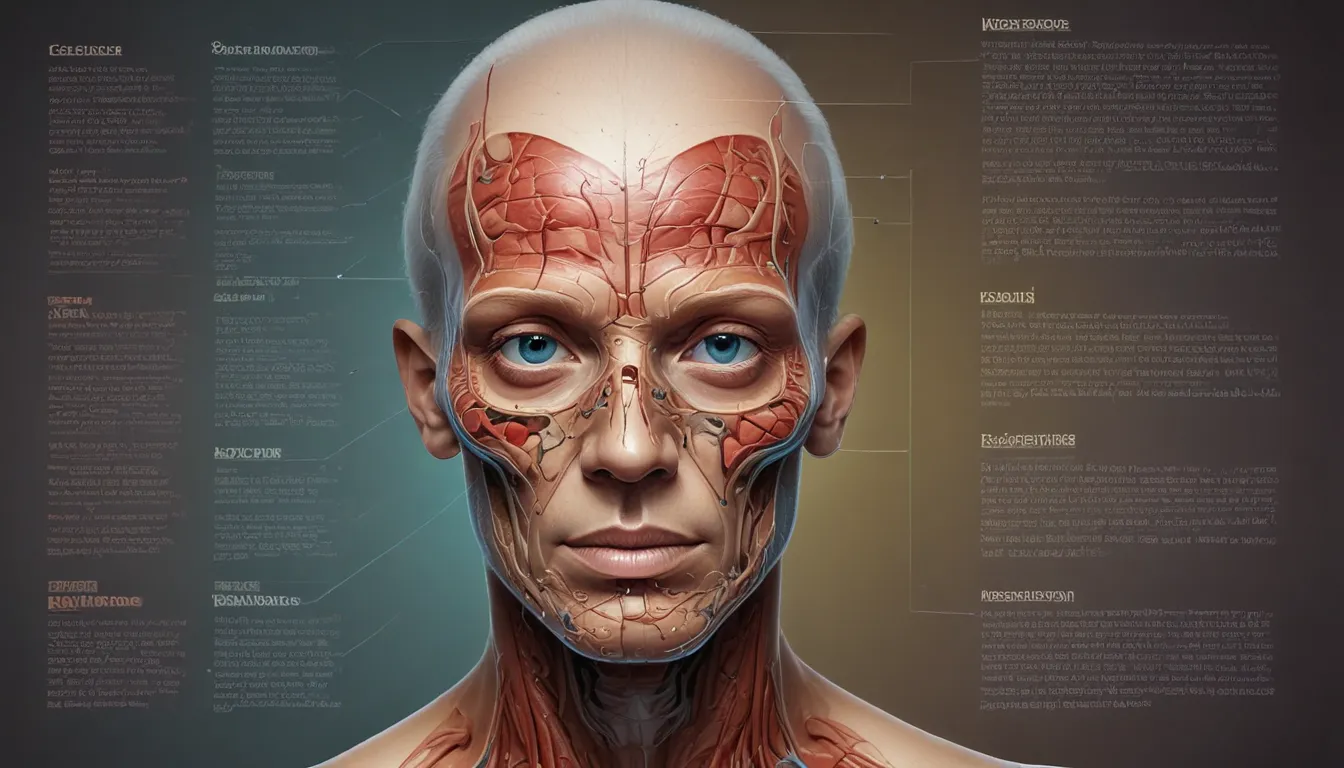A Note About Images: The images used in our articles are for illustration purposes only and may not exactly match the content. They are meant to engage readers, but the text should be relied upon for accurate information.
Welcome to the captivating world of medical science, where new discoveries and innovations constantly redefine our understanding of the human body and healthcare. In this article, we will delve into 24 fun and intriguing facts about medical science that will not only pique your curiosity but also expand your knowledge of this dynamic field. Whether you have a passion for biology, technology, or simply marvel at the wonders of the human body, these facts are bound to captivate and inspire you. Let’s embark on a journey through the fascinating realm of medical science and uncover some remarkable insights that will leave you in awe of the human body’s wonders and the groundbreaking achievements of medical research and innovation.
Key Takeaways:
- The human body is capable of producing over 25 million new cells every second, showcasing its remarkable regenerative potential and ability to maintain overall health and vitality.
- The human nose can detect about 1 trillion scents, highlighting the incredible sensory capabilities of the human body.
The Remarkable Sense of Smell
Did you know that the human nose is incredibly sensitive? It’s capable of discerning an astonishing 1 trillion different scents. This remarkable ability to detect a vast array of odors is made possible by the complex network of olfactory receptors in the nose. These receptors can identify and distinguish an extensive range of smells, from the pleasant aroma of flowers to the pungent scent of vinegar. The sense of smell plays a crucial role in our daily lives, influencing our preferences, emotions, and even memories. With such an extraordinary capacity for olfactory perception, it’s no wonder that the human nose is often regarded as a marvel of biological engineering.
The World of Walking
It’s truly amazing to think that the average person covers a distance equivalent to circling the globe five times over the course of their lifetime through walking. Whether it’s strolling through the park, navigating bustling city streets, or simply going about daily activities, each step contributes to this remarkable cumulative feat. The human body’s ability to traverse such vast distances underscores the incredible endurance and resilience inherent in our physical form. This fascinating fact serves as a testament to the enduring and tireless nature of human mobility.
The Rainbow of Colors
The human eye possesses an extraordinary capacity to perceive a vast spectrum of colors, allowing us to appreciate the rich and diverse visual world around us. With the ability to distinguish approximately 10 million distinct colors, the human eye exhibits a remarkable level of sensitivity to variations in hue and intensity. This incredible range of color perception enables us to experience the beauty of natural landscapes, the vividness of artistic creations, and the nuances of everyday surroundings in stunning detail. The intricate mechanisms of the human eye serve as a testament to the wondrous complexities of the human body’s sensory capabilities.
The Active Brain
Contrary to popular belief, the brain is actually more active during sleep than when engaged in the passive activity of watching television. While the body is at rest, the brain remains highly active, carrying out essential functions such as memory consolidation, information processing, and neural maintenance. This heightened level of brain activity during sleep underscores the vital role that rest plays in supporting cognitive processes and overall brain health. Understanding the dynamic nature of brain activity during sleep serves as a reminder of the profound significance of quality rest and rejuvenation for cognitive function.
The Power of Saliva
Saliva plays a crucial role in maintaining oral health and facilitating the process of digestion. It’s astounding to consider that over the course of a lifetime, the average person produces enough saliva to fill two entire swimming pools. This staggering volume of saliva underscores the continuous and essential nature of saliva production, which aids in the breakdown of food, enhances oral hygiene, and supports overall oral function. The sheer magnitude of saliva generation throughout a lifetime serves as a fascinating testament to the body’s remarkable ability to sustain essential physiological processes.
The Cellular Marvel
The human body is a marvel of biological complexity, consisting of an astounding 37 trillion individual cells. These cells form the structural and functional basis of all bodily tissues and organs, contributing to the intricate systems that sustain life. Each cell plays a specialized role, working in harmony with others to maintain the body’s overall function and vitality. The sheer magnitude of cellular diversity and abundance within the human body highlights the extraordinary intricacy and organization that underlie the fundamental processes of life.
The Heart’s Rhythmic Symphony
The heart is a tireless and vital organ, tirelessly pumping approximately 1.5 million barrels of blood throughout the body over the course of an average lifetime. This incredible volume of blood circulation is essential for delivering oxygen and nutrients to tissues, removing waste products, and sustaining overall bodily function. The heart’s ceaseless rhythmic contractions serve as a powerful symbol of life’s enduring force, underscoring the remarkable capacity of the human body to sustain the essential processes that support existence.
The Regenerative Wonder
The human body possesses an astonishing capacity for self-renewal and repair, with the ability to regenerate lost or damaged tissues. This remarkable regenerative ability is evident in various bodily systems, including the skin, liver, and bone marrow. The intricate mechanisms of tissue regeneration serve as a testament to the body’s innate resilience and adaptive capabilities, enabling it to recover from injuries and maintain overall health. Understanding the body’s natural regenerative potential offers profound insights into the remarkable resilience and vitality inherent in the human form.
The Healing Power of Laughter
The act of laughter is not only a source of joy and amusement but also a powerful contributor to overall health and well-being. Studies have shown that laughter can bolster the immune system, reduce stress, and enhance cardiovascular function, leading to a range of positive health benefits. The physiological and psychological effects of laughter serve as a reminder of the profound interconnectedness between emotional experiences and physical well-being, highlighting the therapeutic potential of humor and lightheartedness in promoting holistic health.
The Vocal Symphony
From the melodic tones of speech to the diverse array of vocal expressions, the human body is capable of producing over 7,000 different types of sounds. This remarkable vocal versatility underscores the rich and dynamic nature of human communication, allowing for the conveyance of emotions, thoughts, and experiences through the medium of sound. The intricate mechanisms of vocalization serve as a testament to the remarkable capacity for expression and connection that is inherent in the human form.
The Skin’s Vital Role
The skin, encompassing an expansive surface area, serves as the body’s largest organ, providing vital protection, sensory input, and thermoregulation. Its multifaceted functions include shielding the body from external threats, regulating temperature, and conveying sensory information about the surrounding environment. The skin’s remarkable adaptability and resilience underscore its pivotal role in safeguarding overall health and well-being, serving as a dynamic interface between the body and the external world.
The Iron Forge
The human body’s iron reserves are substantial, containing enough of this essential mineral to forge a metal nail. Iron plays a crucial role in the production of hemoglobin, the protein responsible for transporting oxygen in the blood. This remarkable fact serves as a testament to the body’s intricate biochemical composition and the vital role that iron plays in supporting essential physiological functions.
The Energetic Brain
The human brain, with its intricate network of neurons and synapses, is capable of generating approximately 23 watts of power when awake. This remarkable feat of energy production underscores the dynamic and active nature of cognitive processes, highlighting the substantial metabolic demands associated with brain function. The brain’s extraordinary energy output serves as a testament to its ceaseless activity and the essential role it plays in supporting the body’s overall function and vitality.
The Microbial Community
The human body serves as a thriving ecosystem for trillions of microorganisms, including bacteria, viruses, and fungi, collectively known as the microbiota. These microorganisms play a pivotal role in various aspects of human health, influencing digestion, immune function, and even mood regulation. The intricate symbiotic relationship between the human body and its resident microorganisms underscores the profound interconnectedness of the body’s internal ecology and its impact on overall well-being.
The Skeletal Foundation
The human skeleton, consisting of 206 individual bones, forms the structural framework that supports the body and protects vital organs. This remarkable anatomical architecture provides stability, mobility, and protection, serving as the foundation for bodily movement and overall function. The intricate arrangement of bones within the human skeleton underscores the remarkable adaptability and resilience of the body’s skeletal system.
The Carbon Factory
The human body’s carbon content is substantial, containing enough of this essential element to produce approximately 900 pencils. Carbon serves as a fundamental building block for organic molecules, playing a central role in the composition of tissues, proteins, and other essential compounds within the body. This fascinating fact serves as a testament to the body’s remarkable biochemical composition and the integral role that carbon plays in sustaining vital physiological processes.
The Genetic Marvel
The human body’s DNA, when unraveled and stretched end to end, is of sufficient length to span the distance from the sun to Pluto and back. This astonishing scale of genetic material highlights the intricate complexity and vast informational capacity encoded within the human genome. The remarkable expanse of DNA within the body serves as a testament to the wealth of genetic information that underlies the body’s development, function, and overall biological diversity.
The Enzymatic Orchestra
Enzymes play a vital role in facilitating essential biochemical reactions within the body, and the human body is capable of producing over 100 different types of these specialized proteins. These enzymes contribute to a diverse array of metabolic processes, including digestion, energy production, and cellular repair. The remarkable versatility and abundance of enzymes within the body underscore their indispensable role in supporting overall physiological function and health.
The Phosphorus Factory
Phosphorus, an essential mineral for cellular function and energy metabolism, is abundant within the human body, containing enough of this element to produce approximately 2,200 match heads. This fascinating fact serves as a testament to the body’s intricate biochemical composition and the vital role that phosphorus plays in sustaining essential physiological processes.
The Cellular Symphony
The human body exhibits a remarkable capacity for cellular regeneration, producing over 25 million new cells every second. This ongoing process of cell renewal is essential for tissue repair, growth, and overall bodily maintenance. The sheer magnitude of cellular turnover within the body underscores the dynamic and prolific nature of cellular activity, highlighting the remarkable regenerative potential inherent in the human form.
The Sulfur Shield
Sulfur, a crucial element for the formation of proteins and other essential compounds, is abundant within the human body, containing enough of this element to repel 200 skunks. This remarkable fact serves as a testament to the body’s intricate biochemical composition and the vital role that sulfur plays in sustaining essential physiological processes.
The Neurotransmitter Network
Neurotransmitters are essential chemical messengers that facilitate communication between nerve cells, and the human body is capable of producing over 150 different types of these vital signaling molecules. These neurotransmitters play a central role in regulating mood, cognition, and various physiological functions, underscoring their profound impact on overall brain health and well-being.
The Calcium Connection
Calcium, a mineral essential for bone health and muscle function, is abundant within the human body, containing enough of this element to produce approximately 500 chalk sticks. This fascinating fact serves as a testament to the body’s intricate biochemical composition and the vital role that calcium plays in supporting essential physiological processes.
The Proteomic Diversity
Proteins, vital molecular components that fulfill diverse functions within the body, are produced in remarkable abundance, with the human body capable of generating over 20,000 different types of these essential macromolecules. These proteins contribute to a myriad of biological processes, including structural support, enzymatic activity, and immune function, highlighting their indispensable role in sustaining overall bodily function and health.
Conclusion
In conclusion, these 24 fun medical facts offer a glimpse into the incredible world of science and medicine, where the marvels of the human body and the wonders of medical research intersect. Each fact illuminates a unique aspect of the human body’s complexity and resilience, showcasing the vast potential for discovery and innovation in the field of medical science. Whether it’s the regenerative power of the body or the vibrant diversity of biochemical processes, there is always more to learn and appreciate about the intricate workings of our anatomy. By exploring these fascinating facts, we deepen our understanding of the human body’s capabilities and the transformative impact of medical advancements on our health and well-being.
FAQs
What makes medical science so intriguing?
Medical science is captivating due to its profound impact on human health and well-being. The constant advancements and discoveries in this field continue to revolutionize healthcare, making it an endlessly fascinating area of study.
How can learning about medical facts benefit individuals?
Understanding medical facts can empower individuals to make informed decisions about their health. It also fosters a greater appreciation for the complexities of the human body and the incredible achievements in medical research and technology.
Was this page helpful?
Our commitment to delivering trustworthy and engaging content is at the heart of what we do. Each fact on our site is contributed by real users like you, bringing a wealth of diverse insights and information. To ensure the highest standards of accuracy and reliability, our dedicated editors meticulously review each submission. This process guarantees that the facts we share are not only fascinating but also credible. Trust in our commitment to quality and authenticity as you explore and learn with us.






